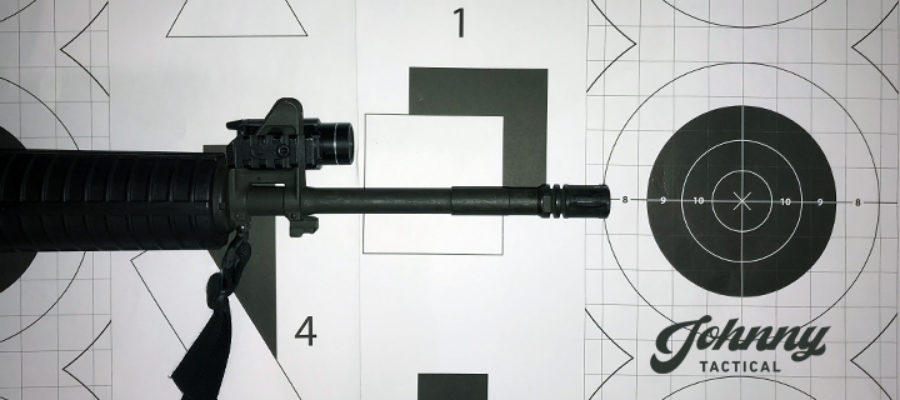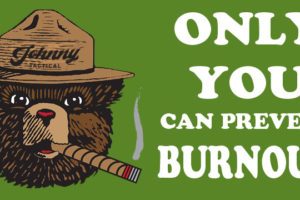My evening shift in Detectives was coming to an end; I had less than an hour to go. But I wouldn’t be going home on time, not that night.
The neighboring town called my department for mutual aid, and there was no time to waste. They had an adult autistic male who had somehow gotten his hands on an AK-47 rifle and was ripping off rounds in a cul-de-sac neighborhood.
One of the Patrol sergeants on duty was a negotiator, so he and I grabbed our gear and loaded up the BearCat. We then grabbed the two other SWAT guys that were working that night, one of whom was a sniper, and headed out to go do what we could while the call went out to the rest of the team.
Pea Soup
When we arrived at what was to be the staging area, we got briefed and pointed in the right direction. The neighborhood where this was happening was all new construction with an unfinished road that wasn’t on any map and lined with partially built homes and vacant lots. The neighborhood was surrounded by woods and a marshy lowland lay on either side of the road where our suspect was last seen. There was a blanket of clouds overhead, concealing the Autumn moon, and a layer of fog as thick as pea soup rolled off the marsh further complicating the scenario.
We crept down the road not knowing what to expect or where to find this guy as the diesel engine of the BearCat betrayed our approach. It was dark and foggy, and the fact that our man had an AK-47 made me very uncomfortable; I understood the range and power of that kind of weapon. As we encountered a gradual bend in the road that curved to the left, we spotted him pacing back and forth in the roadway, rifle in hand. At times he would resort to sitting cross-legged in the middle of the road with the very lethal 7.62 semi-automatic rifle laying in his lap. At others, we would briefly disappear into the tall brush, then reappear, sit, and set the rifle down beside him. He never stayed in one place or one position for very long. If he hadn’t been wearing a light colored t-shirt, we may never have been able to track his movements. His shirt was the only thing that stood out in the dark as we strained to keep an eye on him from over 100 yards away.
The elevated road was hemmed in on either side by thick brush, creating almost a sort of tunnel, which sloped down to more thick brush and then an expansive low-lying marsh that was pumping out fog like a Hollywood horror show. Due to the terrain and our current lack of manpower we were unable to set up a flanking option or otherwise contain him should he choose to get athletic. The last thing any of us wanted to do was have to shoot this guy.
Versatility
There’s nothing sexy about zeroing in the sights on your rifle. You lie on the ground, shoot groups of three, make adjustments, and repeat until your group is tight and on target. But it’s hard to beat the peace of mind that comes with knowing that your rounds will go where you aim them when it counts.
In police work in general, but more specifically in Patrol and in SWAT, we need to be as versatile as possible because we encounter so many different kinds of scenarios in a variety of locations. If we were to plan and train for only urban settings we would be unprepared for an expansive open air scenario. If we only ever sighted and trained with our guns at 25 yards or less we put ourselves at a disadvantage for a long-range encounter. And inversely, if we only trained and prepped our rifles for extreme distance we would be inadequate at close range. We have to be versatile like the Swiss Army knife, not the scalpel or the machete.
Enter The 50 Yard Zero
Sighting in your rifle, or zeroing, at 50 yards gives you approximately plus or minus 2½ inches from point of aim to point of impact at zero yards all the way up to 200 yards. That means your total margin of error is roughly the diameter of a teacup saucer. If you’re aiming for center of mass, then you will be well within the optimal target zone.
In an attempt to explain it further, or quite possibly to make it more confusing, allow me to elaborate. At zero yards your rounds will hit about 2½ inches low because of your offset, or the distance between the height of your sights in relation to the bore. At 25 yards your rounds will hit about 1½ inches low, and then at 50 yards your point of aim will equal the point of impact. From there your rounds will rise to about 1½ inches high at 100 yards, and then back down to where your point of aim will again equal the point of impact at 200 yards. Why? Because, science.
Though we see in straight lines, our bullets travel in an arc, however slight. And depending on where our target falls along the arc of the bullet will determine if the shot is higher, lower, or aligned with our point of aim. Here’s a common graph that illustrates the path of three bullets based on a 25 yard zero, a 50 yard zero, and a 100 yard zero. Just for reference, the dotted horizontal line at 0.0 is the line of sight, and where the various bullet paths cross that dotted line represent the point of impact. It’s pretty plain to see that the 50 yard zero is the Swiss Army knife of zeros:
Best Possible Outcome
After several hours of negotiating, a pack of cigarettes, and a bottle of water, the autistic man thankfully laid down his rifle, walked over to us, and was safely and calmly taken into custody and returned to his family. Had we not employed distance, patience, and a skilled negotiator it could have turned out very differently. It was what I like to call the BPO, or best possible outcome. When it was all over, I drove back to the city, packed my things, and went home to my wife and kids.
That night I went from the role of a detective playing solitaire at my desk to a SWAT operator, all in the time it took someone to make a phone call. I then traveled from an urban setting in the city where I worked to a rural setting where I was faced with a scenario in which distance was not only my friend, but by bestest buddy ever. If my rifle had been zeroed at 25 yards, you can see from the chart above how grossly exaggerated my margin of error would have been at distance. Had it come to it, a 25 yard zero would have set me up for failure. Errant rounds due to a zeroing issue would only further endanger life and limb.
Having the proper training and the proper gear is essential to being both effective and efficient in a tactical setting. The 50 yard zero is just one part of that. This might sound nerdy or arbitrary, but let me assure you that it’s all academic until it isn’t.
Watch my Youtube video on the 50 Yard Zero for an exclusive discount code.
__________________________
- What distance is your rifle zeroed at?
- When was the last time you checked your zero?
- Is distance your friend or do you habitually get too close?
- Are you prepared for both long range and close quarter encounters?
__________________________
Thanks for reading! Do you have a story that you think we could learn from and that you’d like to share with Johnny Tactical nation? Fill out the contact form and include your name, rank, and department, or email it to [email protected] and follow these guidelines:
– It must be a firsthand account
– True
– Have a lesson, principle, or tactic to apply
– Cleaned of names, dates, and places
– Include your call sign
If your story is selected and published in our blog you’ll get the credit using your call sign and we’ll send you a free Johnny Tactical morale patch.







6 Comments
Leave your reply.